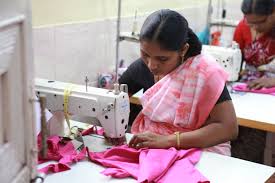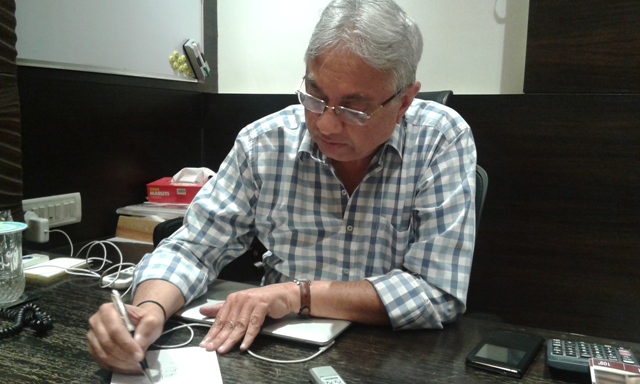 While rising production costs in China and its shift towards value-added goods has not really undermined its position in the world textile and apparel sourcing market, however, western countries are increasingly looking for low-cost sourcing destinations and shifting focus on near sourcing manufacturing.
While rising production costs in China and its shift towards value-added goods has not really undermined its position in the world textile and apparel sourcing market, however, western countries are increasingly looking for low-cost sourcing destinations and shifting focus on near sourcing manufacturing.
As Rahul Mehta, President, IAF points out, “The concept of manufacturing closer to home is catching on. It will impact global dynamics. Manufacturing countries will look at non-traditional markets since they can’t afford to depend on markets that are not growing much. Europe and South America will expand faster. Production will be higher in South America since US companies are looking to source from them.”
Sourcing closer home, a new trend
The emerging trend among developed economies is moving facilities closer to suppliers. One of the ways, companies are following is ‘near-sourcing’, a supply chain strategy that minimizes the distance goods travel between suppliers and distributors. Near-sourcing reduces the total cost of doing business, which has risen exponentially in the last few years, making profitability more difficult to maintain. While European companies are moving facilities to the United States, the American players are looking south of the border. South America has become an attractive location for these companies looking to reduce the cost of ocean crossings from facilities in Asia.
The textiles industry in Mexico, for instance, is recovering from a decade of losing ground to
 lower-cost Asian rivals. More recent developments are playing in the country’s favour, causing both domestic demand to rise and US companies to shift their orders back to Mexico. As Asian wages climb, sourcing from Mexico is becoming increasingly attractive due to its comparably high-skilled labour force, its improving infrastructure, its membership in the North American Free Trade Association and, most importantly, its proximity to the United States, which allows for short lead times. Indeed, Mexico is becoming known as an affordable place to produce and one whose facilities provide a high level of customer satisfaction.
lower-cost Asian rivals. More recent developments are playing in the country’s favour, causing both domestic demand to rise and US companies to shift their orders back to Mexico. As Asian wages climb, sourcing from Mexico is becoming increasingly attractive due to its comparably high-skilled labour force, its improving infrastructure, its membership in the North American Free Trade Association and, most importantly, its proximity to the United States, which allows for short lead times. Indeed, Mexico is becoming known as an affordable place to produce and one whose facilities provide a high level of customer satisfaction.
Honduras, meanwhile, has become America’s single largest source of T-shirts, helped by the US-Central America Free Trade Agreement (CAFTA), which went into effect in 2006. When ranked among the top apparel exporters to the United States, it sits at number seven.
Other emerging low cost sourcing options
According to a Kurt Salmon Global Sourcing Reference report although Bangladesh continues to be among the top five exporters to the United States, it won’t be for long unless it amends its production to become more socially and environmentally responsible. Vietnam and Indonesia, which occupy the number two and three spots on the US exporters’ list, face a similar challenge as well.
However, Mehta feels buyers are putting pressure on Bangladesh factories to improve wages, labour standards and safety standards but the question is when Bangladesh standards improve, will they be as competitive as they are now? “In the meantime many buyers are looking at other sourcing options,” he says.
Cambodia, the reports says is showing strong double-digit growth in six out of 10 product categories, but its market share remains relatively small. And CSR is not the only challenge for low-cost sourcing centers or those countries aspiring to be; many still lack the required infrastructure as well as the supply chain and production capabilities needed to offer volumes similar to those of China. For example, India, in order to hold onto its place as the sixth-biggest exporter of apparel to the United States, has to solve its infrastructure, productivity and business environment issues and better leverage its materials, which are more consistently available than those of many other low-cost sourcing countries.
“So far India has failed to grow beyond its traditional strength in apparel exports. We are not looking seriously at product expansion, category expansion, and market expansion. We are too much dependent on our traditional strengths. To grow exports, India needs to look at new markets and have a broader product basket. We should move away from cotton based and summer based exports. Capacity should be used around the year that will reduce cost of operations, increase profitability and turnover,” opines Mehta.
Experts say that tomorrow’s sourcing road will be a bumpy one, with raw material prices difficult to predict and constantly shifting consumer expectations. Sums up Mehta saying, “South Asia’s importance in apparel will grow. I think there is potential for intra trade. Both as a market and as a support system, South Asia will grow. South Asia and the Far East can be seen not only as markets but as sources of supply. Apparel has shifted from high cost economies to low cost economies. It has moved from the US and EU to China to Bangladesh, Vietnam and Cambodia. Myanmar and Africa are the only countries left now.”












